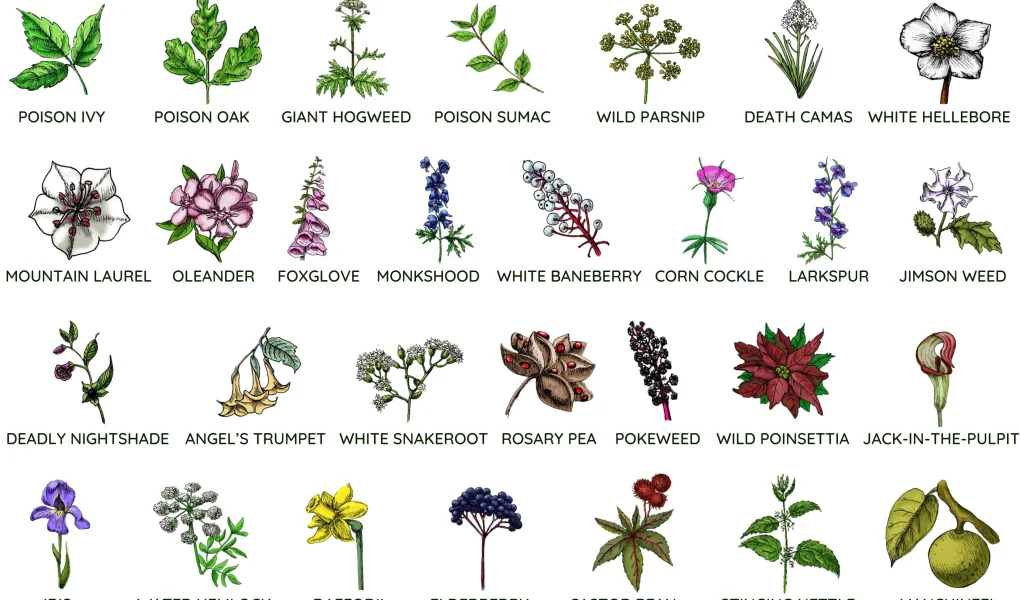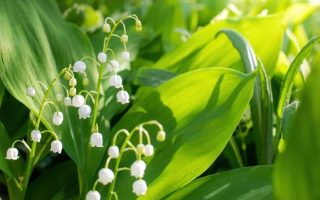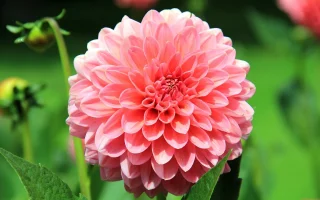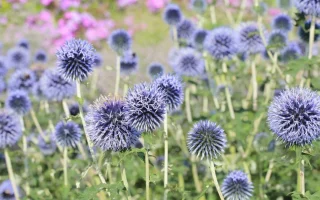lettersforvivian.org – Nature’s beauty often comes with hidden dangers, and poisonous plants are a prime example. While many plants are harmless, some can cause severe allergic reactions, burns, or even death. This guide aims to help you identify and avoid these dangerous plants, ensuring a safer and more enjoyable outdoor experience.
Poison Ivy (Toxicodendron radicans)
Poison ivy is notorious for causing allergic contact dermatitis due to the presence of urushiol oil in its leaves, stems, and roots. It can grow as a climbing vine, shrub, or ground cover and is commonly found in wooded areas, along riverbanks, and near roadsides in North America. The plant features compound leaves, with each leaf consisting of three leaflets. The leaf edges can be smooth or toothed, and the leaflets are typically shiny with a reddish tinge in the spring.
Poison Oak (Toxicodendron diversilobum and Toxicodendron pubescens)
Poison oak, like poison ivy, contains urushiol oil and can cause allergic contact dermatitis. It can grow as a shrub or climbing vine, depending on the species. Toxicodendron diversilobum, also known as western poison oak, is found on the West Coast of the United States. Toxicodendron pubescens, or eastern poison oak, is native to the southeastern United States. Poison oak has leaves that resemble oak leaves, with lobed edges and clusters of three leaflets.
Poison Sumac (Toxicodendron vernix)
Poison sumac is a deciduous shrub or small tree found in swampy areas in the eastern United States. It contains urushiol oil and can cause allergic contact dermatitis. The plant has compound leaves with 7 to 13 leaflets arranged in pairs along a central stem, with one leaflet at the tip. The leaflets have smooth edges and can have a glossy appearance. Poison sumac produces clusters of small, greenish-yellow flowers and white or grayish fruit.
Giant Hogweed (Heracleum mantegazzianum)
Giant hogweed is an invasive plant native to the Caucasus region and now found in parts of North America and Europe. Contact with the plant’s sap can cause phytophotodermatitis, a reaction that makes the skin extremely sensitive to sunlight, leading to severe burns and blisters. It can grow up to 14 feet tall and has large, lobed leaves, white flower clusters, and hollow, ridged stems with purple blotches.
Stinging Nettle (Urtica dioica)
Stinging nettle is a perennial plant found in many parts of the world. The plant is covered with tiny, needle-like hairs that release irritants when touched, causing painful stinging sensations, itching, and redness. It can grow up to 6 feet tall and has dark green, serrated leaves that grow in pairs along the stem. It produces small, greenish-white flowers that hang in clusters.
Wild Parsnip (Pastinaca sativa)
Wild parsnip is a biennial plant native to Eurasia and now found in parts of North America. The plant’s sap contains furanocoumarins, which can cause phytophotodermatitis when it comes into contact with skin and is exposed to sunlight. It can grow up to 5 feet tall and has yellow, umbrella-shaped flower clusters and pinnately compound leaves with toothed leaflets.
Water Hemlock (Cicuta spp.)
Water hemlock is one of the most poisonous plants in North America. Ingestion of even small amounts can be fatal, causing seizures, respiratory failure, and death. The plant is often found in wet areas like marshes and riverbanks. It can grow up to 8 feet tall and has small, white, umbrella-shaped flower clusters and pinnately compound leaves with serrated leaflets.
Conclusion
By familiarizing yourself with these dangerous plants and their identifying characteristics, you can better protect yourself and your loved ones from harm. Always be cautious when exploring natural environments, and if you suspect exposure to a poisonous plant, seek medical attention immediately. Enjoy the outdoors safely and responsibly.




